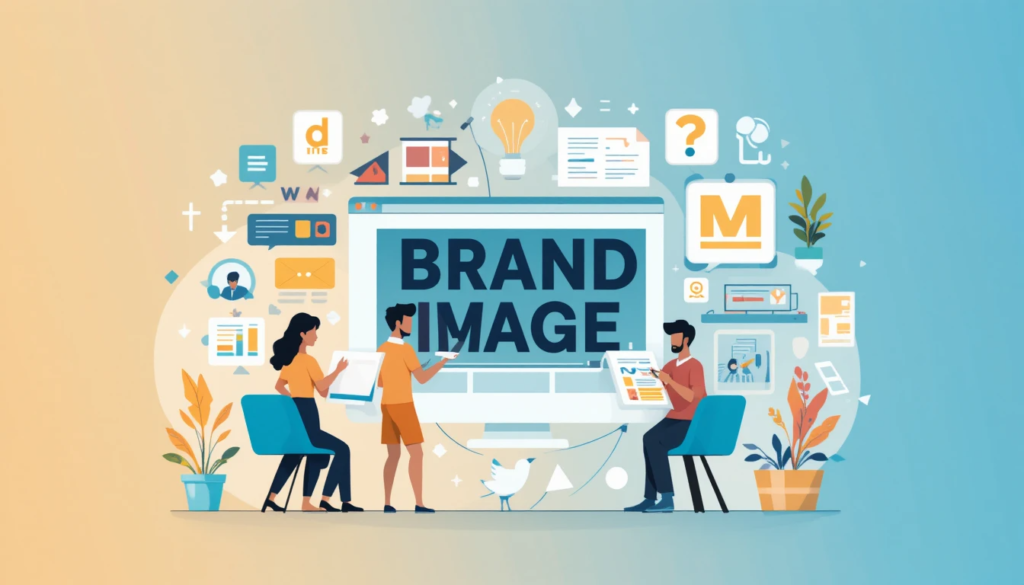
The Role Played by Design in Brand Image
Nowadays, when individuals make decisions in seconds, branding is a massive element in design. What a brand looks like, i.e., its website, packaging, logo, and appearance and feel, will directly impact its image and customer relationship.
93% of customers indicated that sight is the one that tips their buying decision. So, how do people see a brand through design, and why is it important?
This article will explore the close connection between design and brand knowledge, its impact on customer behaviour, and how brands can utilise design to make a lasting impression.
The Psychology of Design and Brand Perception
Design is more than look—it impacts feelings, trust, and credibility. The consumer decides within the first seconds when dealing with a brand. Adobe says that 38% of people will no longer visit a site if the design or content is hideous.
Why is that? Bad design affects more than a brand’s image—it affects a customer’s feelings. If a website is hard to navigate or a logo is horrific and unprofessional, customers will doubt the quality and character of a brand. But gorgeous, intuitive-designing brands stand a better chance of making a good first impression, which leads to more trust and interaction.
Most Important Design Elements Shaping Brand Perception
Several design elements influence how a brand is perceived. Let’s talk about some of the most influential ones:
Logo Design
A logo tends to be your brand’s first visual form, and it must communicate the message and essence of your brand. 75% of the audience recognises a brand through a logo alone.
A logo must be uncomplicated, recollected, and right for your brand’s personality. It must look effective across all stages and be scale-friendly on a billboard and a business card.
Color Palette
Colours evoke feelings and even get people moving. Different colours affect people differently—blue induces professionalism and trust, whereas red creates a sense of urgency and excitement. 85% of shoppers base purchasing decisions only on colour.
The ideal colour scheme for your business can set the right emotional mood and entice the audience.
Typography
The type you use on your site, marketing materials, and packaging is louder than numbers—it says much about your brand voice. Serif type can be sophisticated, while sans-serif type is typically modern and approachable. 95% of people have a positive experience with a brand with readable typography.
Consistency of typography across all touchpoints is essential to building a recognisable, consistent brand identity.
Website and User Experience (UX) Design

Your site is typically the first customer touch point, and design will play an essential part in creating a positive experience. A simple design—i.e., simple to use, fast loading, and responsive—enables visitors to locate what they want quickly. Google estimates that 53% of mobile users will abandon a website if it loads in over 3 seconds.
An excellent UX keeps people on board and increases the chances of conversions, leading to a good brand image overall.
Visual Consistency
Consistency across every touch point—your website, social media, print collateral, or product labelling—is the best way to achieve brand awareness and trust. Brands with clear visual identities appear more credible and trustworthy on many channels. 60% of customers report being more likely to buy from a brand with a consistent experience regardless of which channel they’re engaging with. Consistent design enables your brand to differentiate itself and define itself.
The situation with Brand Loyalty and Good Design
Great design sells, but more importantly, it makes individuals loyal. Consumers will return for more if they enjoy a brand’s usability, atmosphere, and design. 48% of customers are most likely to be brand loyal if a brand gives them an excellent user experience.
Second, good design also creates an emotional connection with customers. If a brand’s visual features appeal to the customer’s interests or values, it is recalled and trusted, and repeat purchases ensue. 64% of customers make buying decisions based on an emotional connection with a brand.
How to Use Design to Create a Stronger Brand

Invest in Professional Branding
Your visual identity is not to be taken lightly. Invest in a design studio or professional designer, and you will be able to harness the full potential of design to create a consistent, lovely, and strategically positioned brand. Good design says a lot about professionalism and can engage people and get them to trust and believe in you.
Put User Experience First
Whether you are creating a website or mobile application, customer experience should be your priority. A simple, user-friendly experience pacifies the customer and keeps him satisfied and engaged. Checking your site and digital touch points at intervals to ensure they are responsive and straightforward to use on any device brings peace of mind.
Be Authentic and Reflect Your Brand Values
Your design should express your brand personality and values. Genuine design makes people connect emotionally, and they feel understood and connected. Ensure your colour palette, logo, and visual identity express the message you wish to convey about your brand.
Design Consistency Across All Channels
Consistency is king wherever your customers are—your website, social media, or hard goods. Your logo, colour, and font must be the same on all mediums. This builds brand recognition and cements your message.
Design is not only about making things look nice—it affects how people think about your brand. Good design makes people feel something about your brand and trust you. Great and sound design will create your brand, hold on to customers, and boost sales. Design plays a massive role in how your customers feel about your brand and the feelings that are attached to it.
Good design is not something to brag about but an investment; design can create loyalty, steer business growth, and solidify your market position. Remember, “You never get a second chance to make a first impression.” As instant electronic transmission is our modem means of communication, the medium of design most often makes the crucial first impression.